


2S4 Tyulpan
English Translation
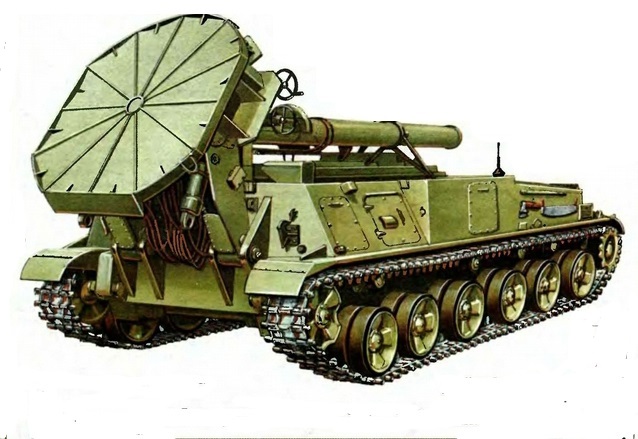 |
La 2S4 Tyulpan dans la désignation russe du GRAU .Le Tyulpan Russe est le mortier automoteur le plus lourd qui n’ait jamais été mis en action de par le Monde. Il a été vu en action en Afghanistan et en Tchétchénie
Dans ce conflit, la précision, la puissance et l'efficacité du projectile Smel'chak ont été décisives pour détruire des cibles localisés rapidement, précisément, en seulement quelques coups Il a été identifié pour la première fois en 1975, et fut donc appelé M-1975 par l’ OTAN
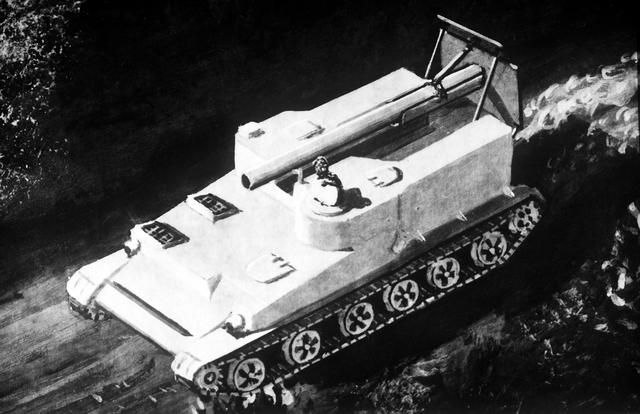 |
| M 1975 Internet |
Il reçoit la même dénomination que le 2S7 Pion
Sa dénomination officielle est SM-240 (2S4). Sa conception est basée sur le véhicule poseur de mines GMZ transportant en externe sur l’arrière du châssis le mortier M-240 240 mm à chargement par la culasse
Les études pour ce mortier 240 mm automoteur ont commencé à la fin des années 1960. Le premier prototype a été achevé en 1969. Il a été admis au service de l'armée soviétique en 1971 Le 2S4 est unique pour ce type de calibre et n'a pas des analogues dans le monde. Actuellement, les mortiers en service aux Etats-Unis, Grande-Bretagne, France et Allemagne, ne dépasse pas 120 mm
Le 240-mm automoteur est connu à l'Ouest en 1975, le M-1975 alors qu’en Russie, il était connu comme le SM-240 (2S4), même si son nom est plus fréquent est Tyulpan ou tulipe
Histoire
Le mortier est une arme destinés détruire une vaste gamme de cibles ( bâtiments abritant des soldats des équipements , des postes de commandement, les batteries d'artillerie et de roquettes et de lutter contre d'autres matériels qui sont inaccessibles en tir direct
Cette arme est donc dans la lignée de la longue tradition russe fondée sur l'artillerie
En Janvier 1944, le GAU publié un note sur les nouvelles tactiques et techniques nécessaires pour développer un mortier de 240 mm
Entre 1944-1945 des obus de mortier de 240-mm, sont également développés
Après la guerre, entre 1947 / 1949 des essais sont conduites et en 1950, le mortier a été adopté en tant que 240-mm Mortier ou M-240 d'une portée de 8000 m.
En 1953, pour le M-240 il est mis au point une munition spéciale, qui peut tirer à 9700 m.
La production en série du M-240 et des obus sont été lancés en 1951 et de 1951 à 1958 il a été produits 329 M-240
le 240-mm M-240 est un système tracté sur roue.
Il s'agit d'un mortier classique avec un canon culasse, plaque de couche, et mécanismes divers
L'arme est en 2 parties accessoires, avec enclenchement commun entre eux.
La taille de la M-240 de mortier en position de route longueur 6350 mm, largeur 2430 mm, hauteur (avec plaque de décharge) 2210 mm.
Les obus sont mis dans le tube du mortier, à l'aide d'un chariot. Le chariot est constitué de deux châssis tubulaires soudés avec deux roues
Le canon en position horizontale pour le chargement. .
20-25 minutes sont nécessaires pour mettre en place la zone de tir et 1l faut 15/20 minutes pour quitter la zone de tir
Le mortier était remorqué derrière un véhicule tracteur d'artillerie ou d'autres à a vitesse de 40 km /h.
Les munitions ont été transportées dans le caisse arrière du véhicule tracteur.
Mortier automoteur de 240-mm 2S4 "Tulip"
Le développement de ce mortier 2S4 "Tulipe" a été lancée conformément à la note n° 609-20 du Conseil des ministres en date du 4 Juillet 1967
Le développement du "Tulip" ou 2B8 a été axé sur la base d’un système d’arme automoteur développé sur la base du mortier tracté M-240 et utilisant les mêmes munitions.
Le développement du 2B8 a été réalisé dans les usines de Perm
Le mortier de 240-mm 2B8 a été installé sur le châssis de l'objek 305, (véhicule poseur de mines GMZ), qui sera ensuite construit en tant que Krug (SA-4 Ganef) par Uraltransmash
Le premier des trois prototypes du 2S4 Tulip sont prêts en Mai 1969 et en Juin ils sont immédiatement transférés à l'usine de test, où ils sont achevés le 20 Octobre 1969.
les essais militaires ont lieu en 1971, et le 2S4 "Tulip" est adopté peut après
Entre 1972-1973 il a été délivré quatre "Tulipes"
Le Tulip coût de 210 mille roubles (1972). Pour comparaison: un 152-mm canon automoteur "Acacia" coût 30,5 roubles.
430 de ces véhicules ont été utilisés par les troupes russes un certains nombre par par l’ armée tchécoslovaque (1985/1991) et peut-être aussi par l'Iraq
Description
 |
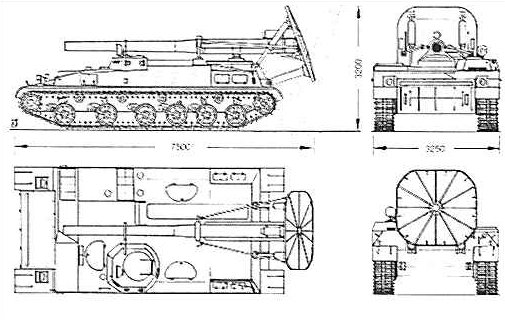 |
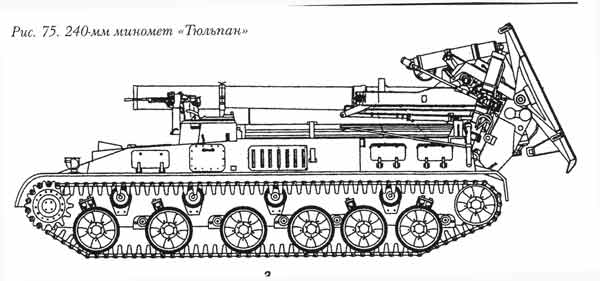 |
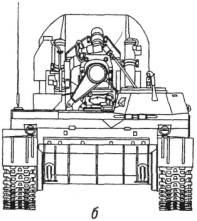 |
| Internet |
Le mortier est complet avec une plaque de couche il est abaissé hydrauliquement à partir du berceau autour d'une position pivot sur l’arrière du châssis. La plaque de couche est articulée de sorte que le tube se positionne à l’arrière du châssis
Un petite lame dozer est placée est positionnée à l’arrière
Le châssis du véhicule est en blindage acier soudé avec le compartiment moteur à l'avant droit Le pilote se trouve à l’avant gauche Le blindage de ce véhicule offre une protection contre les armes légères et des éclats d'obus.Une MG 7,62-mm est montée sur le tourelleau du chef de pièce pour l'autodéfense.Le chef de pièce est assis à l'arrière du conducteur il possèdent donc un Mg de 12.7mm montée en externe comme Mitrailleuse antiaérienne ou d’autodéfense. Une autre trappe se trouve à l'arrière du tourelleau avec une trappe ouvrant vers l'extérieur sur l’autre côté du toit du véhicule.
Les munitions sont arrimées en interne et chargées dans le mortier au moyen d'une grue manuelle montée à l'arrière du véhicule sur le côté gauche, il est probable qu'une assistance hydraulique ou autre puisse être fournie
la suspension est à barre de torsion avec de chaque côté six galets de roulement . le barbotin est à l'avant, le galet tendeur à l'arrière On trouve aussi 4 petits rouleaux de renvoi
Le tube du mortier est placé sur le toit du véhicules . Des phares IR se trouvent à l'avant du châssis
il ne nécessite aucune préparation particulière avant le tir
Il possède un moteur diesel V-59 permet à une vitesse allant jusqu'à 62,8 km/ h, sur route et 25-30 km / h en tout terrain
Le mortier
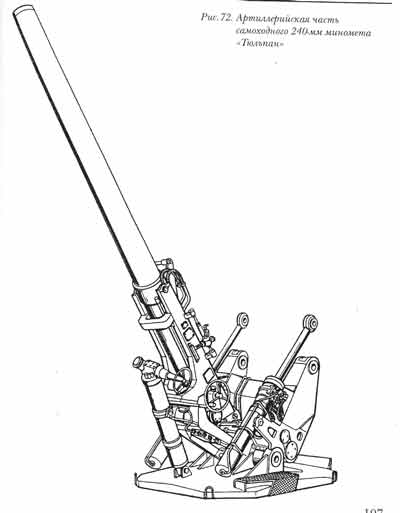 |
| Internet |
Le 2B8 est similaire au M240 sauf que les opérations de chargement auparavant manuelles sont désormais facilitées par des systèmes d’aide hydrauliques
Ce système permet de:
a) Mise en place du Mortier;
b) Visée et guidage vertical de mortier;
c) Ouverture de la culasse
d) Le dépôt de la mécanisation des mines situées au-dessus de la coque du châssis de base;
d) le chargement de mortiers, de la fermeture du volet, fermeture de la culasse.
Contrairement au M-240, le 2B8 peut avoir un angle de visée d'environ 63 °.
Le système de visée est de mortier sur le côté droit du mortier
Chargement peut être fait à l'aide d'une grue.
Les obus sont stockées à l’intérieur dans 2 « barillets » automatisés
L’obus
Obus de mortier HE (acier) F-864 pesant 130,7 kg, avec une charge militaire de 31,9 kg. Obus Fusant GVMZ-7 équipé pour exploser immédiatement ou à retardement.
Obus NA-864 avec mine F-864 qui délivre 5 charges, Il a une V° de 158 à 362 m / s et,une portée de 800 à 9650 m.
En 1967, il a été lance pour la M-240 et 2B8 des études sur des obus nucléaires d'une capacité de 2 kilotonnes, et en 1970 a commencé le développement de mines anti-personnel avec la même charge.
En 1983, a été adopté pour le 240 mm le Smel'chak guidées projectile ou Daredevill 3F5
Les obus 240 mm 3F5 guidés sont des projectiles, qui possèdent un guidage autodirecteur pour des mines terrestres ou Semi-Active Laser-Guided Projectile (SAL-GP),
Ils sont tirés de la même manière qu’un obus classique de mortier de 240 mm Le déclenchement peut se faire à l’impact ou électriquement
Le cycle complet du tir du 3F5 est connu sous le nom de 3VF4.
La partie avant du projectile contient un laser de désignation qui est normalement recouvert par un capuchon balistiques.
Derrière se trouve la charge militaire High-Explosive Fragmentation (HE frag) une ogive qui contient 21 kg d'un explosif à haute énergie l'équivalent de 32 kg de TNT.
Il a été utilisé au cours de la guerre en Afghanistan L'explosion de cette mine est terrifiant Il détruit toutes les habitations aux alentours et pulvérise voitures et corps humains. Il a été utilise contre des cibles urbaines pour percer le béton armé.
L'équipage du 2S4 se compose de quatre hommes, mais un apport supplémentaire de cinq hommes est nécessaire pour faire fonctionner le mortier., La portée peut atteindre 20. Kms . En raison de la grande taille de l'arme et le poids des munitions (130 kg pour un projectile), il a une faible cadence de tir un coup/ minute.
l’effet de souffle est très important
.
Utilisation opérationnelle
Il a été construit pour lutter contre les forces de l'OTAN dans le Théâtre de l'Europe centrale, mais il a été utilisé dans les guerres asymétriques en Afghanistan et en Tchétchénie en 1988-1989, où l'URSS avait déployé environ 400 mortier 2S4
Mais le système Tulip n'a pas participé à la guerre de Tchétchénie de 1995-1996 et 1999-2000. Ce qui va créer une polémique sur le fait que les troupes russes sont allées au combat sans couverture d’artillerie.
Données techniques
Calibre 240 mm
Equipage 4 +5.
Poids 30 tonnes
Longueur 8,5 m
Largeur de 3.2m
Hauteur 3.2 m
Moteur V-59 Diesel 520 ch à barre de torsion
rayon d action 420 Kms sur route
Vitesse 62 km / h
Vitesse maximale en tout terrain 25 - 30 km / h
Gué 1 m
Armement de mortier de 240 mm
Maximum de tir 9,51 km
Taux de feu 1/min
Traverse 8 ° 8 ° à gauche et à droite
Elévation angle 50 / 80 °
Capacité de 20 munitions
armement secondaire de 12,7 mm SShK MG
Protection NBC
Autre Photoscope Other Walk Around ICI HERE
2S4 Tyulpan
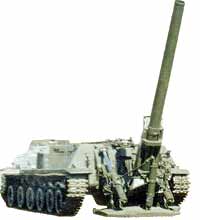 |
The 2S4 Tyulpan in GRAU designation is a Russion Self propelled Mortar Tyulpan was the heaviest mortar in deployment among any country. It was saw in action in Afghanistan and Chechnya
In this conflicts, the accurate precision,the power and the effectiveness of the Smel'chak projectile was decisive to destroy localized targets quickly, precisely, with only a few rounds It was identified for the first time in 1975 so was called M-1975 byNato
 |
| M 1975 Internet |
He receive the same designation that the 2S7 Pion
Its official designation is SM-240(2S4). Its design is based on the GMZ tracked minelaying vehicle carrying an externally mounted M-240 240 mm breech-loading mortar on the hull rear.
For this 240 mm self-propelled mortar studies began in the late 1960s. The first prototype was completed in 1969. It was accepted to service with the Soviet Army in 1971 This self-propelled mortar 2S4 is unique for such calibre and has no analogues in the world. Currently caliber mortars, consisting in the armament in the United States, Britain, France and Germany, does not exceed 120 mm
The 240-mm self-propelled mortar known to the West in 1975 as the M-1975 but in Russia he was known as the SM-240 (2S4) although its more common name is the Tyulpan, or Tulip
History
The mortar is a weapon intended for destruction of a strong field type structures, buildings adapted by the enemy for sheltering manpower and equipment, command posts, artillery and rocket batteries and other combat materiel which are inaccessible for flat fire. The 2S4 Russian army has a long tradition based upon artillery
In January 1944, the GAU has issued new tactical and technical requirements to develop a 240-mm mortar round amplification.
In the 1944-1945 240-mm mortar shells, were also developed
After the war,between 1947 /1949 news tests were conduct and in 1950, the mortar was adopted as the "240-mm Mortar M-240 with a range of 8000 m.
In 1953, for the M-240 was developed a special charge, which provides range 9700 m.
Serial production of M-240 mortar shells were launched in 1951 and from 1951 to 1958 were produced 329 M-240 mortar.
240-mm Mortar M-240 is a rigid system with wheel carriage.
It is a classic mortar with a barrel with a lock, breech block, a frame with a cushion, with the mechanisms of the machine and laying counterbalance mechanism.
The weapon is in 2 parts fittings, swing joint between them.
The sizes of the M-240 mortar in marching position: length 6350 mm, width 2430 mm, height (on plate) 2210 mm.
The mines were brought to the mortar, using a special trolley. The trolley consists of two welded tubular frame and two wheels with tires
The barrel in a horizontal position for loading . .
20-25 minutes are necessary for pre-prepared fire positions, the reverse conversion for 15-20 minutes. Mortar could be towed rear a vehicle ATL or other artillery tractor with a speed of 40 km / hr.
The ammunition were carried in the tractor body and the car.
240-mm self-Mortar 2S4 "Tulip"
Development of 240-mm self-mortar 2S4 "Tulip" was initiated according to the note 609-20of the Council of Ministers on 4 July 1967
Artillery of the "Tulips" or 2B8 has been developed on the basis of the towed artillery mortar M-240 and has the same ballistics and ammunition.
The development of this 2B8 was carried out in the Perm factory
240-mm mortar 2B8 was installed on the chassis of the object 305,(modified GMZ tracked minelaying )who was produced after as Krug (SA-4 Ganef) by Uraltransmash
The first of the three prototype of the future 2S4 Tulip was finished in May1969 and June he was immediately transferred to the factory test, were he was completed on October 20th 1969.
Followed military testing, and in 1971, the 240-mm Mortar 2S4 "Tulip" was adopted in armament.
In the years 1972-1973 has been issued order for four "Tulips"
The Tulip cost of 210 thousand rubles (1972). For comparison: 152-mm self-propelled howitzers "Acacia" cost 30.5 rubles.
430 of these vehicles were used by Russian Troops some were used by Czechoslovakian army (1985/1991)and perhaps also by Iraq
Description
 |
 |
 |
 |
| Internet |
The mortar is carried complete with a base plate and is hydraulically lowered from its traveling position around a pivot on the hull rear. The base plate is hinged to the hull rear so that when emplaced the mortar barrel faces away from the hull
A little dozer blaze is placed in front of the frame
The hull of the vehicle is of all-welded steel armor with the engine compartment at the front right and driver front left. Armor of this vehicle provides protection against small arms fire and artillery shell splinters. A 7.62-mm machine gun is mounted over commander's turret for self-defense.The commander is seated to the rear of the driver and has a raised cupola with an externally mounted 12.7-mm anti-aircraft machine gun. A further hatch is to the rear of the commander's cupola with a similar outward opening hatch on the opposite side of the vehicle roof.
Ammunition is stowed internally and is loaded into the mortar using a hand-operated crane mounted at the rear of the vehicle on the left side it is likely that some form of assisted loading is provided
Suspension is of the torsion bar type with each side having six road wheels with the drive sprocket at the front, idler at the rear and four track-return rollers
The tube of the mortar is placed on the roof of the frame and we found and IR light in front of the chassis
No special preparation of fire position is required for the mortar before firing.
On the frame is installed a diesel V-59 witch allows a speeds of up to 62.8 km/hr road and 25-30 km / h on all terrain
The mortar
 |
| Internet |
In 2B8 mortar barrel and ballistics are left unchanged except that operations on M-240, where all manually, and on the 2B8 it is introduced hydraulic system provides for:
a) the transfer of mortar marching in the military and back;
b) vertical guidance mortar;
c) the removal of the trunk line and opening the shutter;
d) loading mortars, closing the shutter, and lowering the barrel to breech block.
Unlike the M-240, the 2B8-loader angle is about 63°.
The mortar sighting system is on the right side of the mortar
Loading can be done with ground with the help of a crane.
Mines are stored in two automated drum-type storage areas
The shell
HE mortar rounds steel bomb F-864 weighs 130.7 kg, the weight of a bursting charge 31.9 kg. Fuse GVMZ-7 is fitted to the instantaneous and delayed action.
Shot NA-864 with the mine F-864 has 5 charges, which connect the initial speed of mine from 158 to 362 m / s and, accordingly, range from 800 to 9650 m.
In 1967, for the M-240 and 2B8 was started with studies upon nuclear shell with a capacity of 2 kilotons, and in 1970 began the development of anti personnel mines with the same charge.
In 1983, was adopted the 240 mm 3F5 Smel'chak guided projectile or Daredevill
The 240 mm 3F5 guided projectile, is a self-directing land mine or Semi-Active Laser-Guided Projectile (SAL-GP), fired in the same manner as a conventional 240 mm mortar bomb by electrical or mechanical triggering. The complete round ready for firing and including the 3F5 is known as the 3VF4.The forward part of the projectile contains a laser seeker which is normally kept covered by a ballistic cap. Behind the projectile nose is the High-Explosive Fragmentation (HE frag) warhead which contains 21 kg of a high energy explosive stated to be equivalent to 32 kg of TNT. During Afghanistan war he was utilized The blast of this mine was terrific .He destroy all around habitations car and human bodies . A concrete-piercing round for use against urban targets has been reported.
The crew consists of four men, but an extra five are required to operate the mortar.,A possible rang of 20,000 m is possible . Due to the large size of the weapon and the weight of the ammunition (130 kg for a standard projectile) it has a slow rate of fire: one round per minute. 240-mm mortar blast is very important
Operational Use
He was built to fight against NATO Forces in the Theater of Central Europe but he was used in asymmetric wars as Afghanistan and Chechnya where in 1988-1989 USSR had deployed about 400 mortar 2S4
But Tulip did not participate in the Chechen wars of 1995-1996 and 1999-2000.So the polemics on the fact that Russian troops went into battle without adequate fire cover.
Technical data
Caliber 240 mm
Crew 4+5.
Weight 30 tons
Length 8.5 m
Width 3.2m
Height 3.2 m
Engine V-59 Diesel 520 hp Torsion bar
Operational range 420km (on Road
Speed 62 km/h
Speed Maximum cross-country 25 - 30 km/h
Fording 1 m
Armament 240 mm mortar
Maximum fire range 9.51 km
Rate of fire 1/min
Traverse +8°+8° left and right
Elevating angle +50/80°
Ammunition capacity 20
armament secondary 12.7 mm SShK MG
Protection NBC